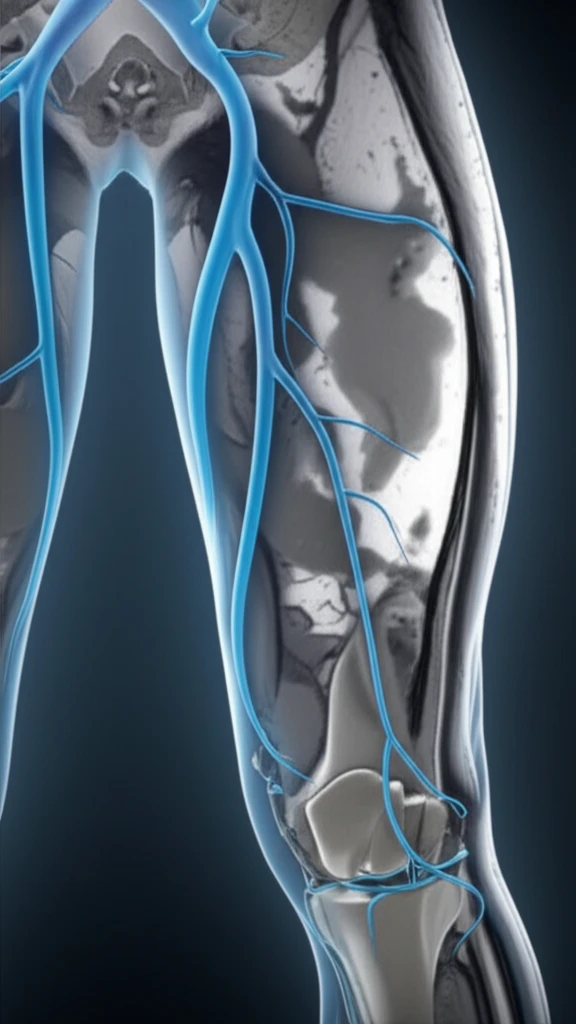
Unclogging the Mystery: Can Advanced Imaging Solve Deep Vein Thrombosis?
"New research explores how Magnetic Resonance Imaging (MRI) could revolutionize the diagnosis and treatment of deep vein thrombosis, offering hope for personalized care and fewer complications."
Deep vein thrombosis (DVT), a condition where blood clots form in the deep veins of the body (usually the legs), is a serious health concern. If left untreated, DVT can lead to pulmonary embolism, a life-threatening condition where the clot travels to the lungs. Current diagnostic methods often rely on factors like patient history and physical exams, which aren't always accurate.
Traditional treatments such as catheter-directed thrombolysis (CDT), which involves using a catheter to deliver clot-dissolving drugs, can be effective, but also carry risks such as bleeding complications. This has created a need for more precise ways to assess the characteristics of blood clots and predict how well they will respond to treatment.
Now, a new study presented at the 19th Meeting of the European Venous Forum explores the use of advanced Magnetic Resonance Imaging (MRI) techniques to assess thrombus composition and predict its 'lysability' or likelihood of dissolving with treatment. This research offers the potential for a more personalized approach to DVT care, helping doctors to choose the right treatment for the right patient.
MSTI: A New Vision for Thrombus Characterization

The study, led by Justinas Silickas and colleagues at King's College London, focused on a novel MRI technique called multi-sequence thrombus imaging (MSTI). MSTI involves using different MRI sequences to map the thrombus, looking at factors like T1 relaxation times, magnetization transfer, and diffusion-weighted imaging. These parameters provide insights into the age, structure, and composition of the clot.
- T1 Relaxation Times: Non-lysed thrombi showed significantly higher T1 relaxation times compared to lysed thrombi (967 ± 20 ms vs. 790 ± 29 ms, P<0.001). This suggests that older, more organized clots have different water content and molecular interactions than fresh clots.
- Magnetization Transfer (MTR): MTR values were similar in both lysed and non-lysed thrombi, indicating that this parameter alone may not be a good predictor of lysability.
- Mean ADC: Non-lysed thrombi had higher mean ADC values than lysed thrombi (1.7 ± 0.1 mm²/s vs. 1.4 ± 0.1 mm²/s, P = 0.05). ADC reflects the water diffusion within the thrombus, which can be influenced by its structure and cellular components.
A Promising Step Toward Personalized DVT Treatment
This research highlights the potential of MSTI to improve the management of acute iliofemoral DVTs. By identifying patients with thrombi that are most likely to respond to thrombolysis, doctors can avoid unnecessary treatments and reduce the risk of complications. However, further studies are needed to optimize image analysis methods, validate these findings in other centers, and ultimately improve patient outcomes.
